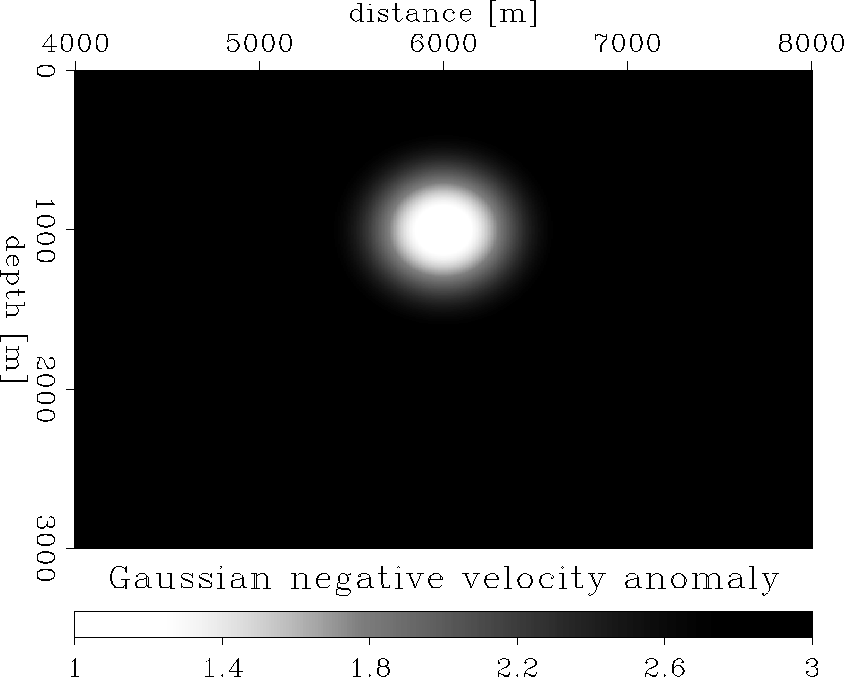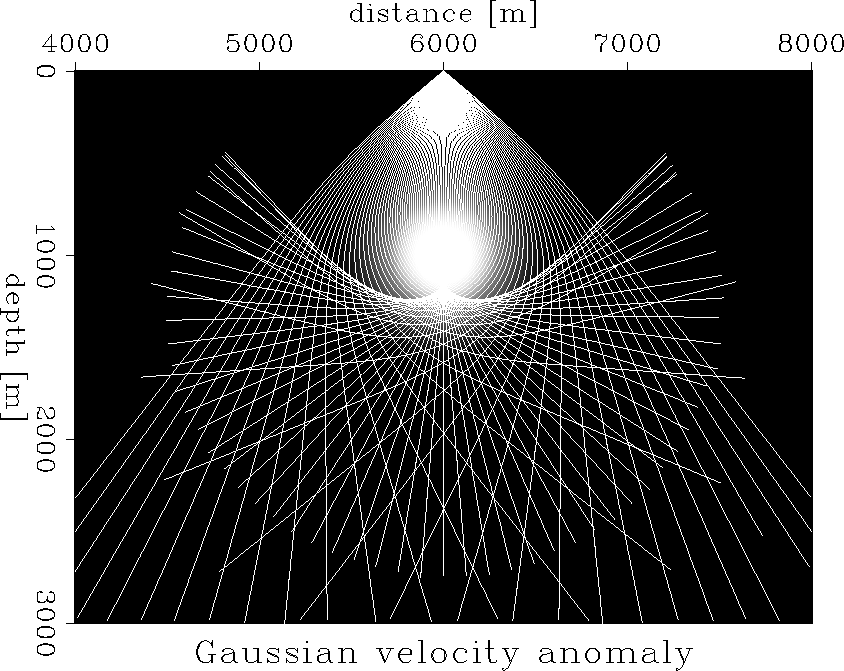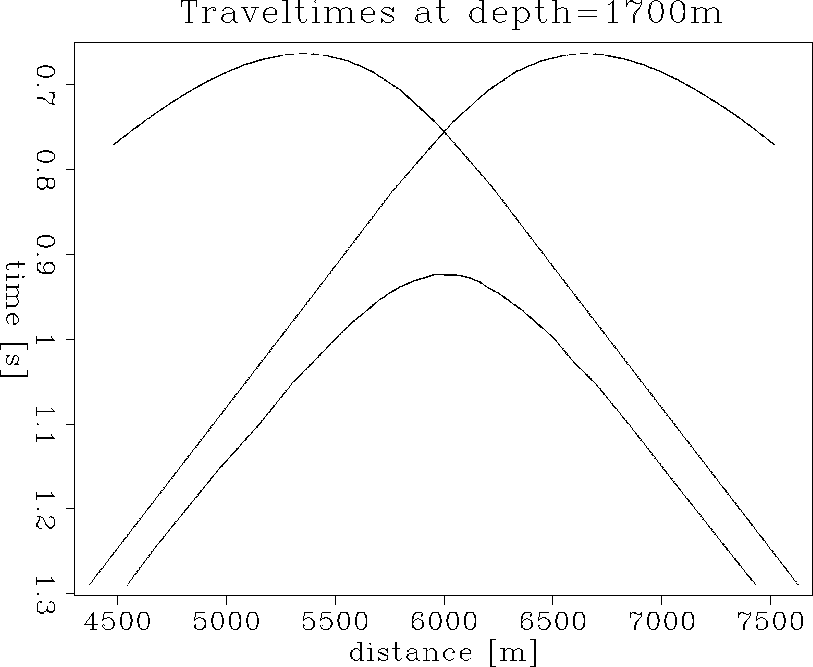|
gauss-velocity
Figure 3 A Gaussian negative velocity anomaly with the center at X=6000 m and Z=1000 m. The background velocity is 3000 m/s. The maximum velocity anomaly is 2000 m/s. |  |
The Gaussian velocity anomaly has a magnitude of 2000 m/s and is placed in a medium of constant 3000 m/s velocity. The center of the anomaly is at X=6000 m and Z=1000 m (Figure 3). The source is on the surface directly above the velocity anomaly. We selected this model because it leads to strong bending of the rays and, therefore, to multiple wave arrivals at depths below the anomaly (Figure 4).
|
gauss-velocity
Figure 3 A Gaussian negative velocity anomaly with the center at X=6000 m and Z=1000 m. The background velocity is 3000 m/s. The maximum velocity anomaly is 2000 m/s. |  |
An interesting zone that displays clear multiple arrivals is at the depth of 1700 m. The times interpolated at this depth are displayed in Figure 5. We have obtained a triplication that confirms our expectations and validates our implementation.
 |
|
gauss-times
Figure 5 Multiple arrival traveltimes computed at depth=1700 m in the Gaussian anomaly model. |  |